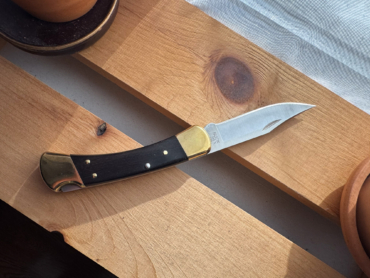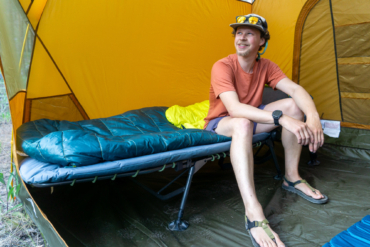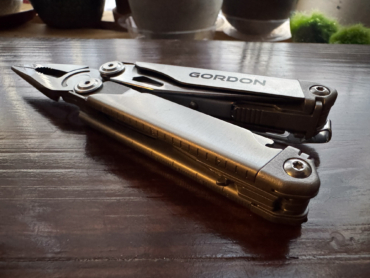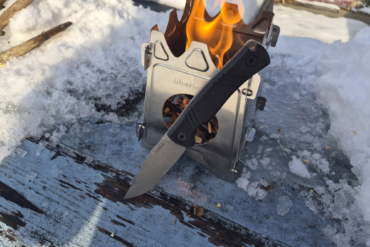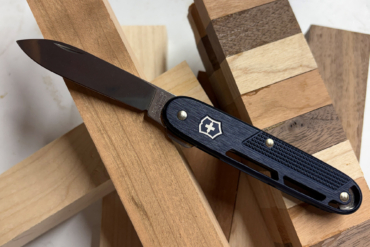While camping, making firewood can be a heck of a lot of fun. You get to use fun tools for a brief spell, work up a sweat, but don’t actually have to do it all day so it turns into “work.” Kind of like taking a friend’s kids to the park; it’s the perfect dose of awesome, which you wrap up before it becomes a chore.
But which tool should you choose? I’ll break down a few options here and give some guidance as to which is best for a given task.
But first, Please be mindful of your environment when making firewood. Don’t damage fragile camping areas by collecting wood where many others camp. Each place is unique and has its own regulations and etiquette, so ensure you’re up to speed on good practices in your region before collecting firewood. If in doubt, pick some up from a local gas station.
Hatchet
The hatchet is a good choice for the campfire and has some additional uses that make it a solid all-around outdoor tool.

Choose a hatchet for cutting limbs from downed trees or chopping through small logs to make firewood. The hatchet is also suitable for making kindling from small logs, although it won’t do much good for trying to split larger logs.
A hatchet is useful around camp. If kept razor-sharp (it should be), it can make shavings to start a fire or hone sticks into cooking skewers. It can even break down big game for transport or pound tent pegs in a pinch.
Choose a hatchet as an alternative to a survival knife, as a tool to collecting small firewood, and as an all-around camp tool. It’s a great choice for the camper.
How to Choose
Hatchets have a few points of differentiation, and the biggest is likely price.
Some, such as the Hults Bruk Almike Hatchet, are hand-forged of high-quality steel with beautiful handles and come at a hefty price ($150 in this case). Less expensive hatchets can also be very functional. Some use glass-filled nylon or steel handles for strength but may lack some of the rustic beauty of traditional models.
Hatchets are intended to be swung with one hand, and most people will be comfortable with a handle length of about 16 inches and weight of around 1 pound. Pick one up and feel it in your hand. Is it comfortable? Feel like it’ll swing well? Then it should do the trick.
Axe
The axe is awesome. It’s big, burly, and looks cool in photos. But it’s also heavy and cumbersome, and can be dangerous around a group.

The axe is a good choice when the primary application is splitting logs or chopping small branches into firewood-length bits. While it will cut through thick logs with many strokes, hacking through big trunks quickly becomes a chore, especially if you have to cut several lengths. For those times, it’s best to choose a saw.
How to Choose an Axe
Axe prices vary widely, with hardware store cheapos starting at around $20. But it’s worth spending a few more bucks and getting at least an Eastwing, a USA-made brand that makes a good quality, steel-handled axe for around $50.
For camping and general outdoor use, a single-bit (sharp on one side) axe is the best choice. While most aren’t intended for the job, they can do double duty knocking in tent stakes and such.
For those who don’t mind shelling out a few more bucks for a high-end or hand-ground model, axes made in the U.S. or Europe tend to retain an edge longer and use better steel, than mass-produced axes.
A longer handle tends to be safer for less experienced users, although they take more work to swing. That’s because if you miss your target or swing through it, you’re less likely to swing past and hit yourself. Always be aware of your surroundings when using an axe. And consider where it will hit if you miss your target. Is that where your foot is standing?
As with most things, you often get a better product at a higher price, with better steels, hand forging, and hickory handles bringing premium pricing.
Saw
Hand saws are our favorite choice for camping. Small hand saws are light, effective at turning small branches and trunks into firewood, and generally faster to use than an axe.

They are also much safer than axes and hatchets, especially around groups of fellow campers, children, and dogs. And they make a little less noise.
A saw’s drawback is that it can’t split logs, and making kindling can be more of a chore. If your only tool is a saw, you need to select firewood wisely.
How to Choose a Saw
There are three main types of hand saws used in the outdoors. The first is the folding saw.
These have a simple design, usually with a stout handle that pivots over a modest, small-toothed blade. They are very effective and available in a wide variety of prices. Here, you usually get what you pay for, with high-end models like the Silky Big Boy cutting wood like butter and lasting for years. Less expensive models, well, you roll the dice.
A second common type of hand saw for the outdoors is the bow saw. Bow saws use a flexible blade tensioned between the ends of a metal “bow” to cut wood quickly. They are extremely effective and can be found at any hardware store, but they don’t pack well.

A great, packable version of the bow saw is the Agawa Canyon Boreal 21 (above). It may be the best folding saw I’ve tested. So far, I’ve used it at a dozen elk camps and probably another 50 occasions at campsites, and it’s still going strong. Another great option is the Sven Saw, which has been trusted for decades.
Finally, a light and packable option is the pocket chain saw. Not to be confused with the motorized type, a pocket chain saw is simply a sharp chain that rolls up small and has a handle on each end. You pull it across branches to make a fast cut.
The advantage of these is portability. The SaberCut Saw, for example, weighs just 6 ounces.
Knife

A stout, fixed-blade knife can be remarkably effective at cutting and splitting small firewood with a technique called batoning. Thus, it’s a prime choice for minimalist travelers who don’t want to carry a dedicated wood-chopping implement.
How to Choose a Knife
You need a fixed-blade, full-tang knife for firewood prep. Those same attributes make for a good all-around survival knife. We generally prefer knives with blades under 3.5 inches for weight and versatility, and that should be plenty to cut small wood as well. If the knife will be used mostly for wood prep, you may want a longer blade or even a machete in warmer climates.
If you’re really intent on using a knife to baton wood, check out the guide to the best survival knives here.
Remember, using a knife to make firewood can be tricky. Practice, and be careful.
Chainsaws and Log Splitters

Now we’re cutting with gas! Really, you shouldn’t need a chainsaw for campfires, but no wood-cutting article would be complete without one. And wood splitters are really just for home heating, so anytime you’re facing one of those you can count on a lot of hard work in your future.
These are loud, powerful tools. I’ve spent a lot of days in my youth making minimum wage running them on farms in Wisconsin, and I can assure you they’re not great recreation. But they are also awesomely effective at making firewood. For some folks, they are a necessity.
If you need either of these, plan to invest in a good one, and be sure to learn from an experienced user how to maintain and safely use these power tools before jumping in — it gets deep fast!



